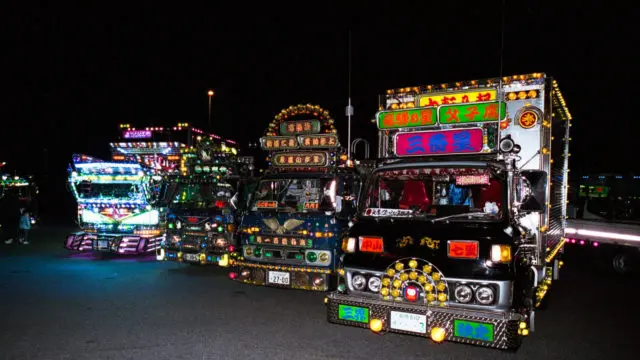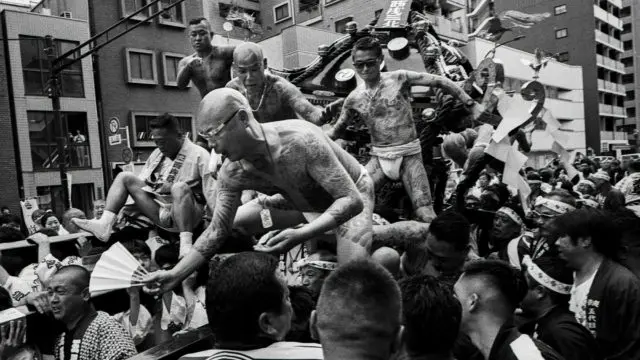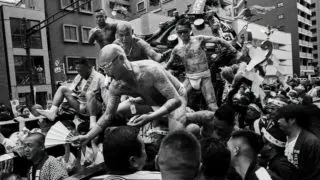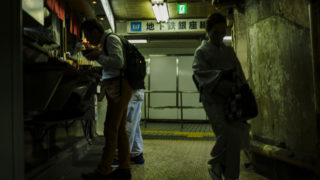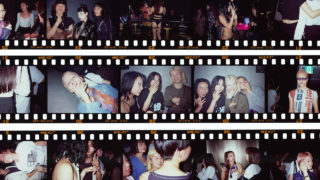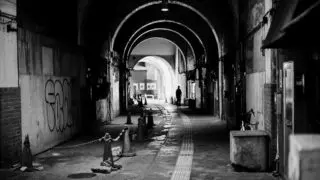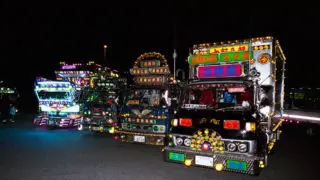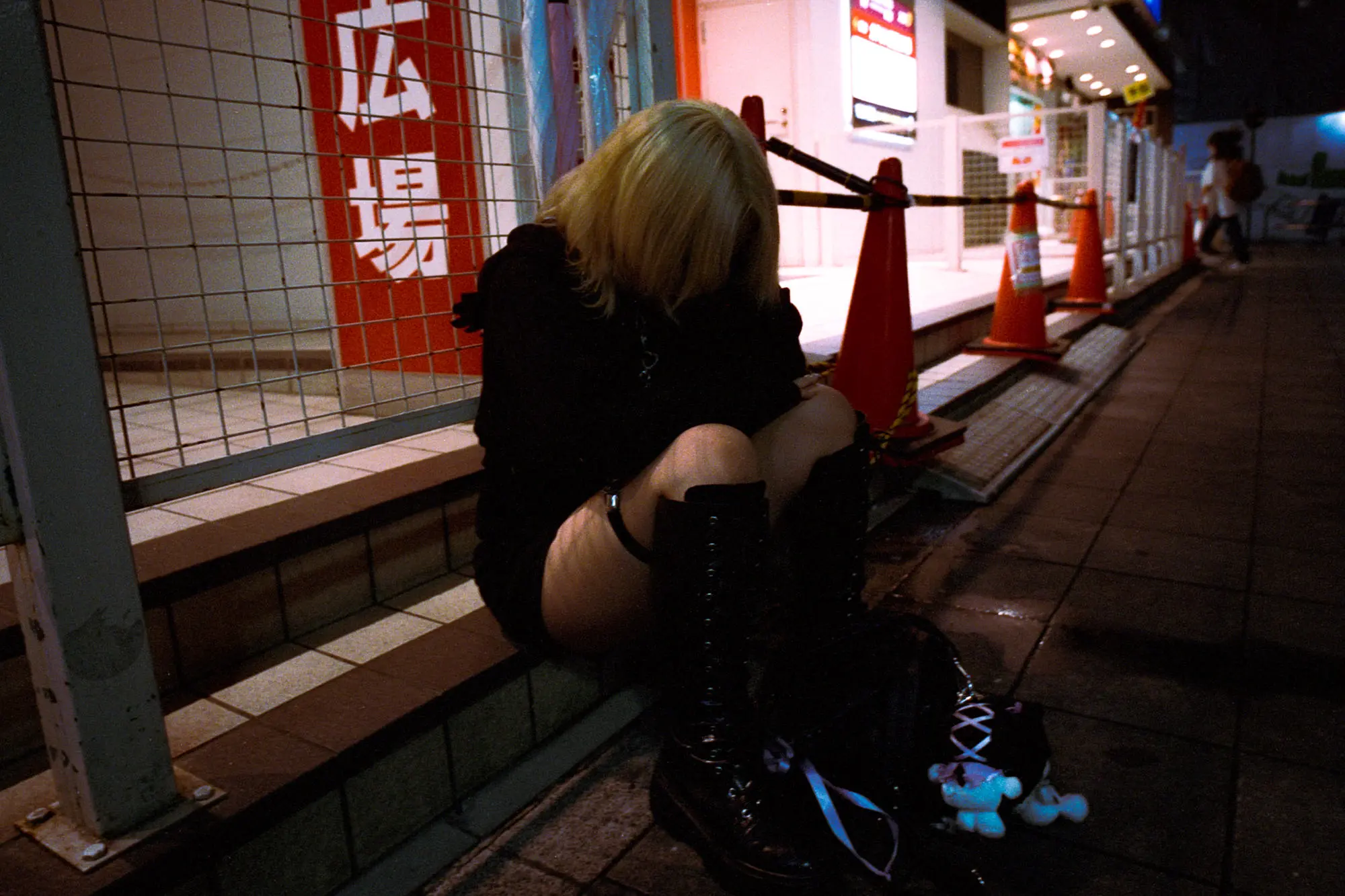 Kabukicho Square (official name: Kabukicho Cinecity Square).
Kabukicho Square (official name: Kabukicho Cinecity Square).
Once known as “Koma Geki Mae(in front of Koma Theater),” this place used to be a meeting spot for people passing through Kabukicho, where children waiting for their mothers who worked in the nightlife industry would wrap themselves in blankets and pass the time, and homeless people would lay down cardboard to sleep.
It was quite a chaotic place, it seems.
I was struck by the chaotic photos of the time when Koma Theater still existed, captured in the work “Shinjuku Lost Child” by YANG Seung-Woo, a photographer from South Korea who works in Japan.
Since then, I started visiting Kabukicho Square, and began people-watching with a canned beer in hand that I bought from a convenience store.
“Here to Protect Runaway Girls”: The Tragedy of a Man I Met at Kabukicho Square
Kabukicho is an area in Shinjuku and is the largest red light district in Japan. With host clubs, cabaret clubs, underground casinos, and more, it is a sleepless city where anything goes. Photographer Daido Moriyama once said, “Shinjuku is a stadium of desire.”
Kabukicho Square is located in the heart of Kabukicho, and observing people there is always interesting.
I started regularly observing this square in 2019. After 9 pm, students would gather and enjoy drinks they bought from convenience stores, while in the corner of the square, sex workers would wait and call out to passing men. Homeless people could be seen sleeping there as well.
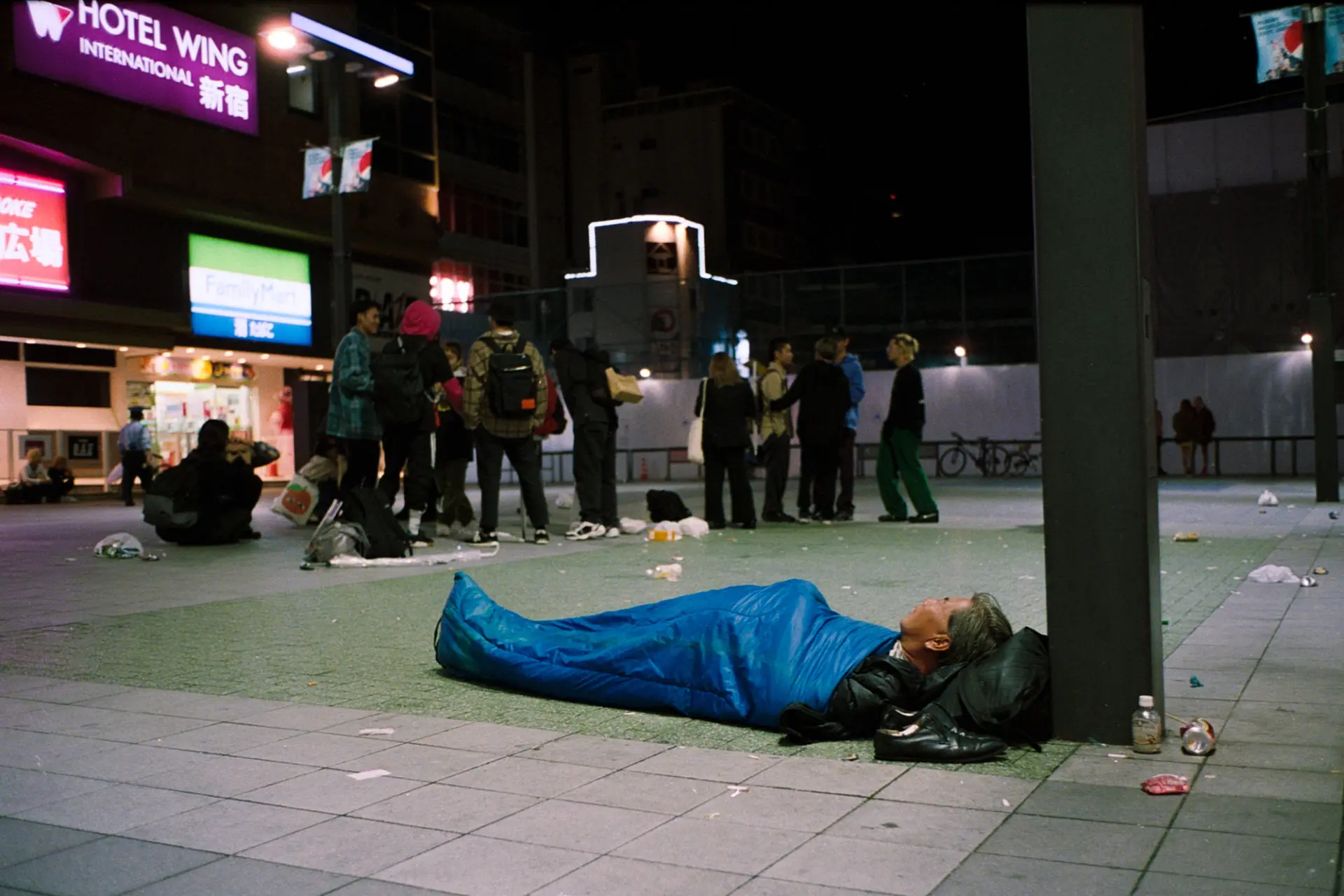
I noticed a change starting in 2020. First, there were fewer homeless people visible on the streets. This was not only in Kabukicho Square but also throughout Tokyo.
According to rumors, this was a government policy aimed at presenting a clean Japan to foreign visitors in preparation for the Tokyo Olympics.
There was an interview video with a person who had been homeless in Kabukicho. He said that he now receives welfare and lives in an apartment provided by the government in Kawasaki.
Just when I thought the number of homeless people in this square had decreased, in the latter half of 2020, girls who appeared to be in their teens began to gather.
Although there had always been many young girls around, the girls I saw at that time were carrying suitcases, and they didn’t seem to be going home even after the last train had passed. I clearly thought they were runaway girls.
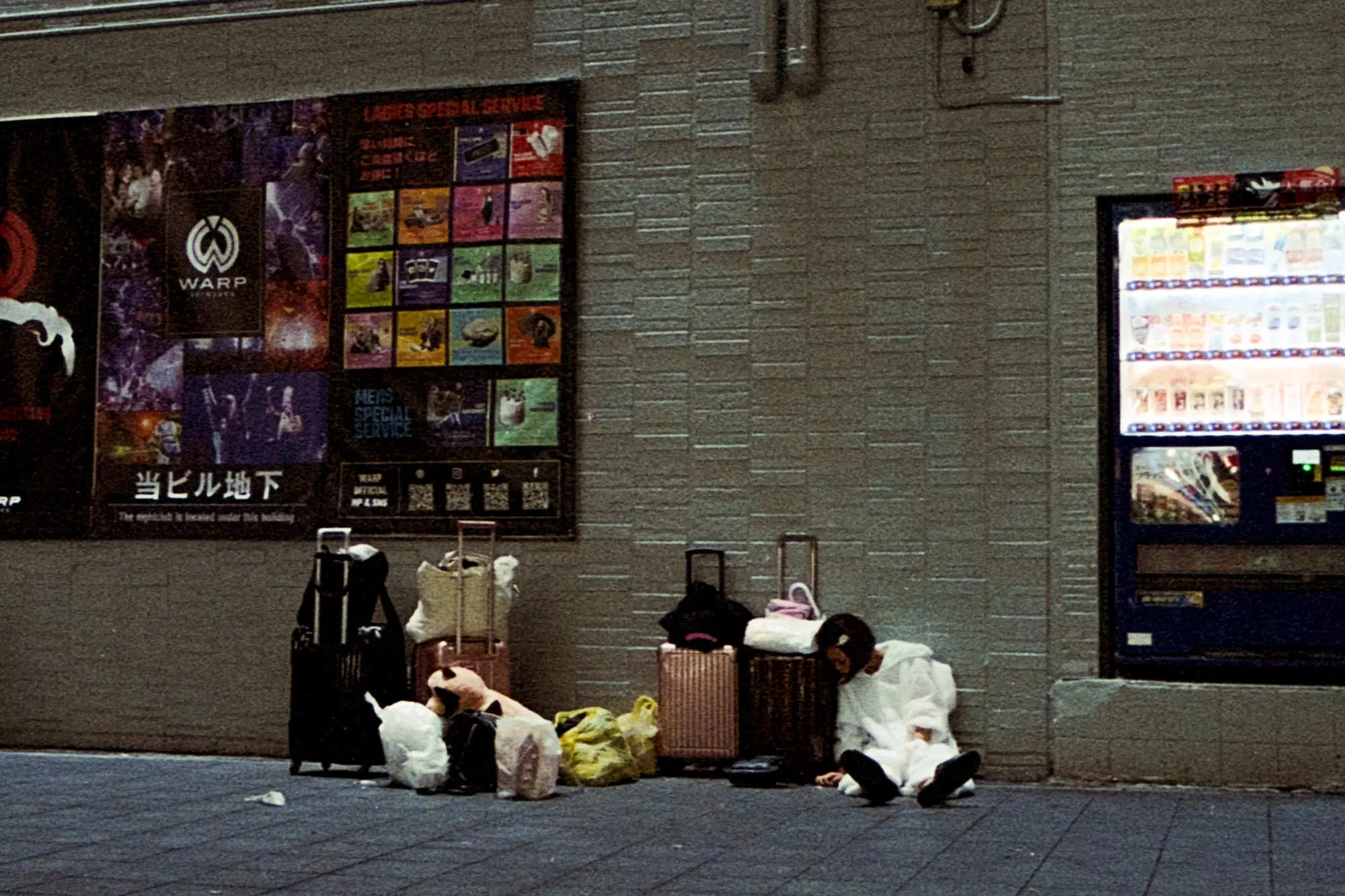
In these groups where the girls gathered, there were also teenage boys, men in their 20s and 30s, and even middle-aged men in their 40s, creating a mix of different genders and age groups.
One time, while watching this scene, I was drinking beer with my friend. At some point, I can’t remember who initiated the conversation, but we ended up joining the group and drinking together.
Then I asked a man in his 40s named Akira, “There seem to be more young people around lately, don’t you think? Do you think it’s related to the impact of COVID-19?”
At that time, due to the impact of COVID-19, more people were losing their jobs. And as a result, the number of child abuse cases was also increasing, according to the news.
I thought that children who wanted to escape such family environments might be gathering in this place.
Then Akira spoke.
“There are many kids who run away to this place because of their family situations. There are also bad adults who target these kids, like those who arrange for prostitution. So, to protect these girls, we are here.”
A year later, in the winter of 2021, I turned on the TV and a certain news story caught my eye.
It was about a man in his 40s who had been assaulted for six hours in Kabukicho and eventually died. That deceased man was Akira, whom I had talked to before.
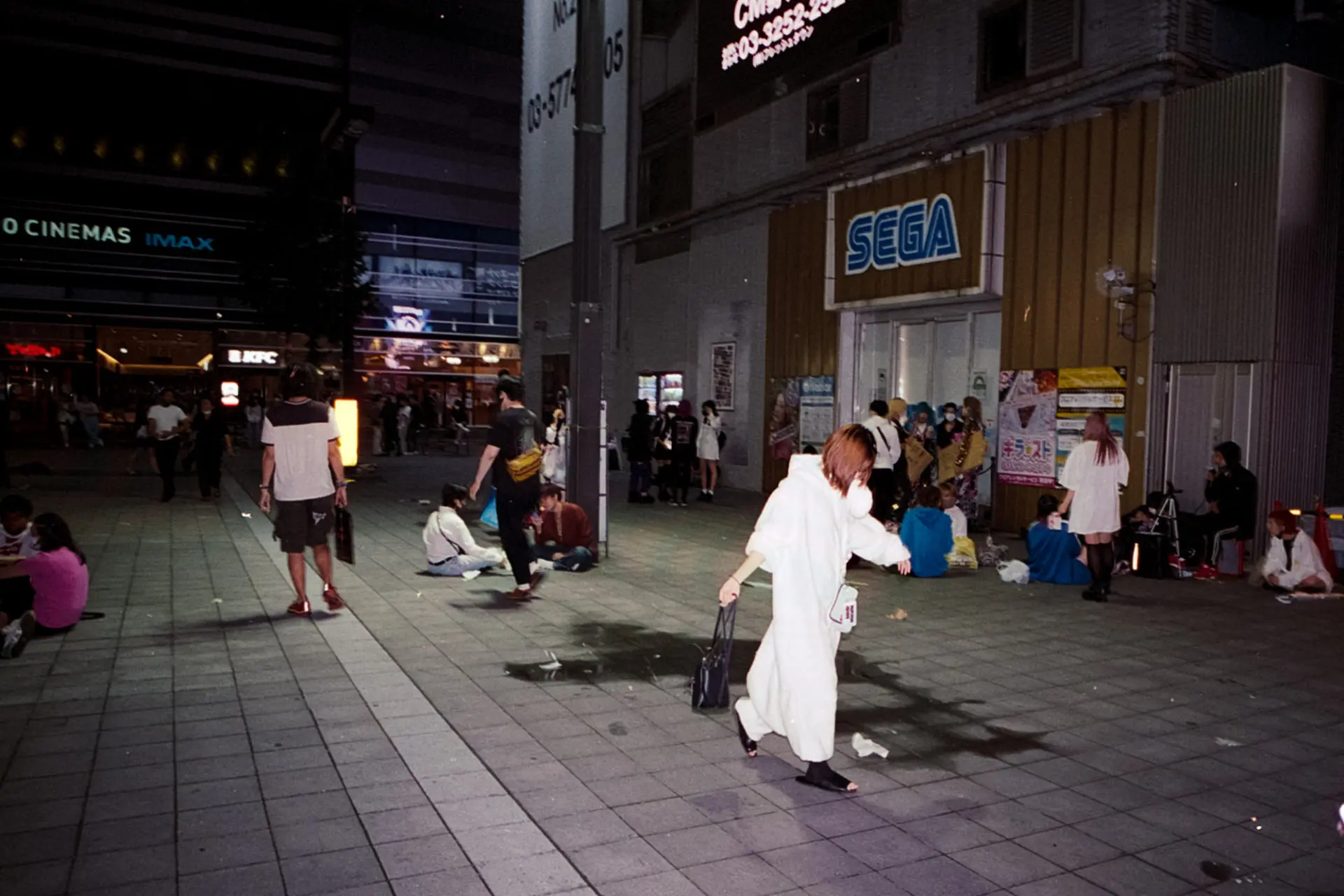
The emergence of “TOYOKO KIDS” making headlines
What was mainly reported in the news about Akira was the existence of “Toyoko Kids” and “Toyoko Circles.”
“Toyoko” means “next to TOHO Cinemas,” and the young people who hung out next to the famous Godzilla head cinema building “TOHO Cinemas Shinjuku” in Shinjuku were called “Toyoko Kids.” Among them, there are some who say, “I am part of the Toyoko Circles, not the Toyoko Kids.”
Moreover, within the groups that gather at Toyoko, there is a volunteer organization called “Kabukicho Manji-kai” that provides hot meals for runaway teens in Kabukicho Square and conducts activities such as picking up trash.
Akira was also a member of the “Kabukicho Manji-kai,” but he was killed by another member.
Originally, the Toyoko Kids used to gather mainly on the east side of TOHO Cinemas Shinjuku, but due to regulations by Shinjuku Ward, they began to gather in Kabukicho Square on the opposite side.
Among Toyoko Kids, there are girls aged 14 and 15. Also, within that group, it was common at the time to see men in their 20s who were part of criminal groups called “han-gure” who did not belong to Yakuza.
As a result, it was not difficult to imagine that this could be a breeding ground for criminal activity.
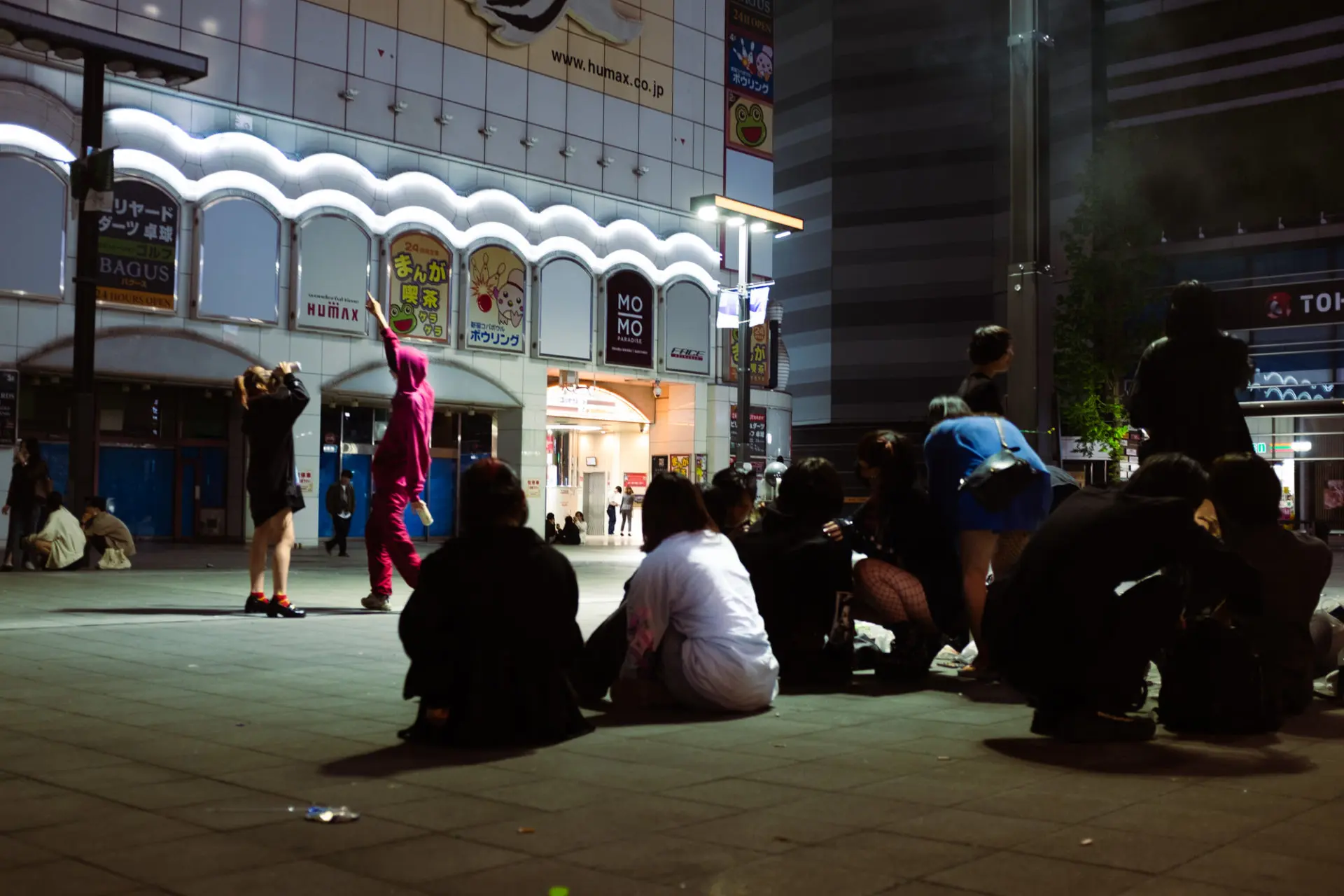
After visiting Kabukicho Square numerous times, I got to know a few people. Through their introductions, while having drinks together, a girl sat down in front of me.
I asked her, “Do you come here often?”
The girl said, “I’ve started coming here recently.”
As we continued talking, I found out she was only 16 years old.
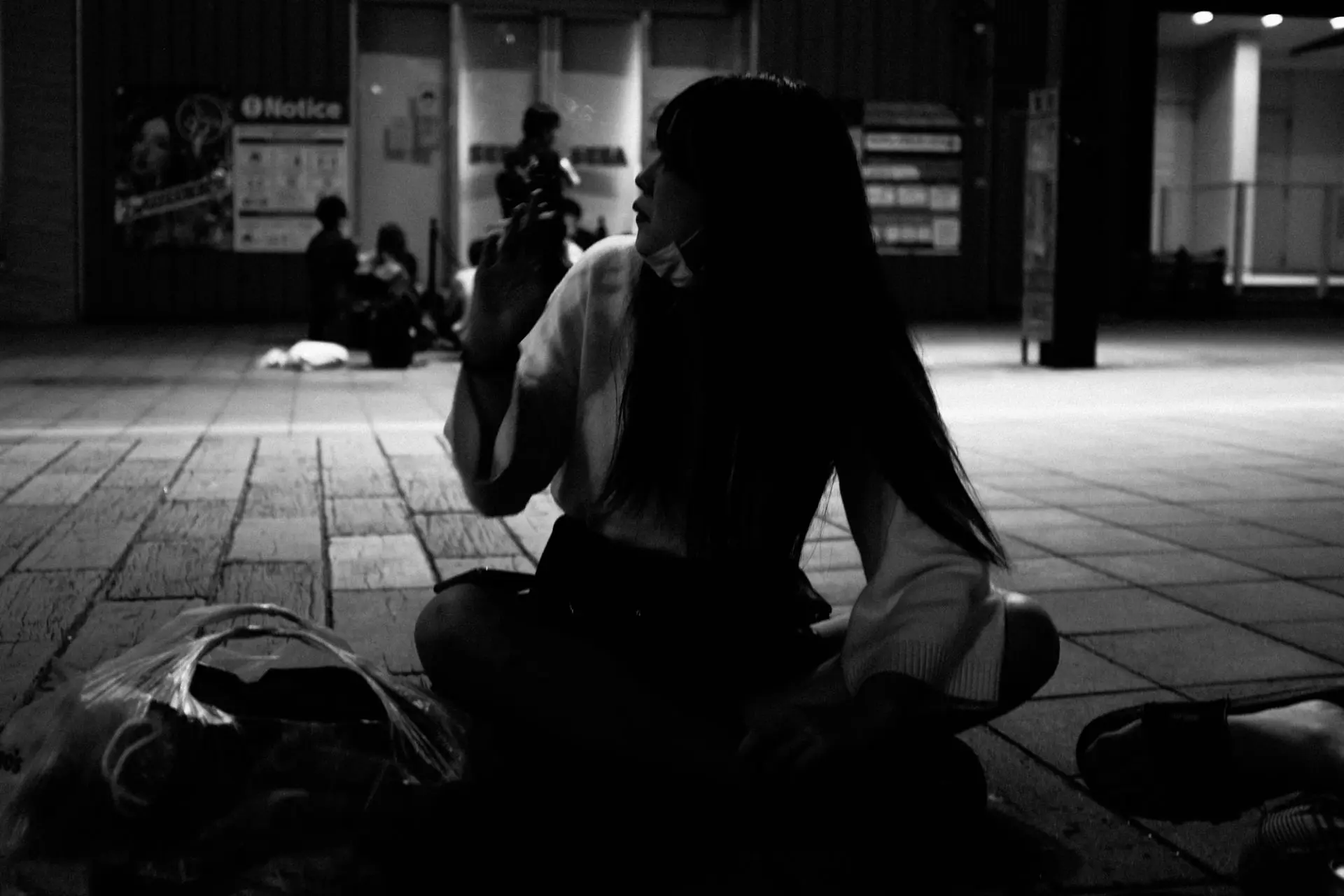
Subsequently, the media continued to report on the “Toyoko Kids” day after day. And what was the result? Runaway teens from all over Japan began to gather at the Kabukicho Square.
One time, I met a pair of teenage girls who said they were from Osaka. They told me they were planning to spend the night at the square with their male friends who lived in Tokyo until morning.
As we were talking, another girl who seemed to be an acquaintance of theirs appeared. She told them, “I have some free time today because there aren’t many customers.” Obviously, she was referring to customers in the sex industry.
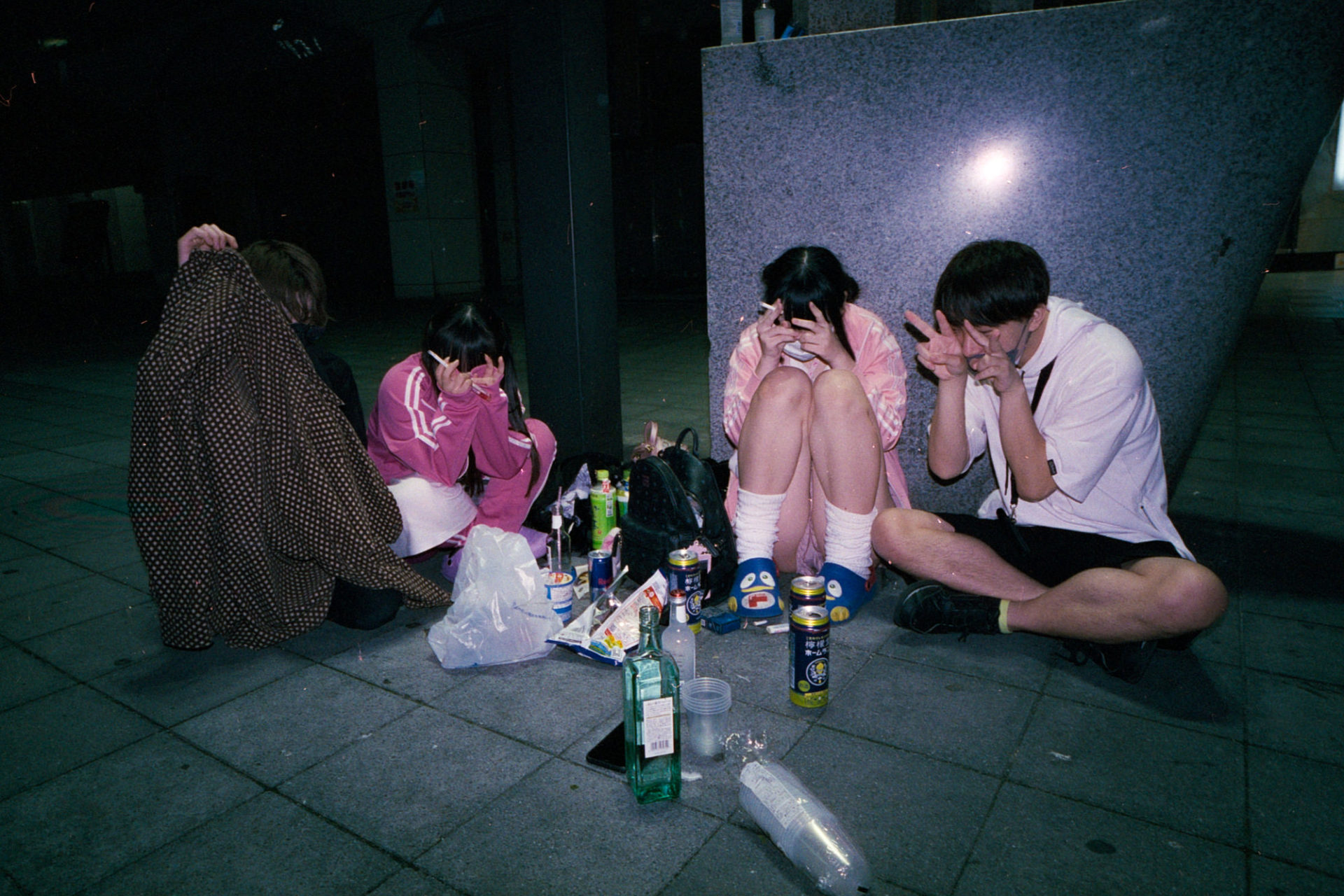
The Social Issues in Japan Faced by TOYOKO KIDS
Underage smoking, drinking, and other delinquent behaviors are subject to police apprehension.
Of course, Toyoko Kids who engage in such behavior are subject to police apprehension, and the police do not simply stand by and watch. Some of the Toyoko Kids even have search requests filed by their families.
If they were to be found by the police, what would happen to them? The only thing the police can do is return them to their guardians. However, it is important to remember the reason why they have gathered at Kabukicho Square in the first place.
Despite coming to Kabukicho Square to escape from their homes, is it truly right to forcibly return them there? The reasons for running away from home vary from person to person, and some children may not have any problems with their home environment.
However, for those who are genuinely being abused by their parents or guardians, it is hard to believe that sending them back home is the right thing to do. Yet, the only thing the police can do is send them back home.
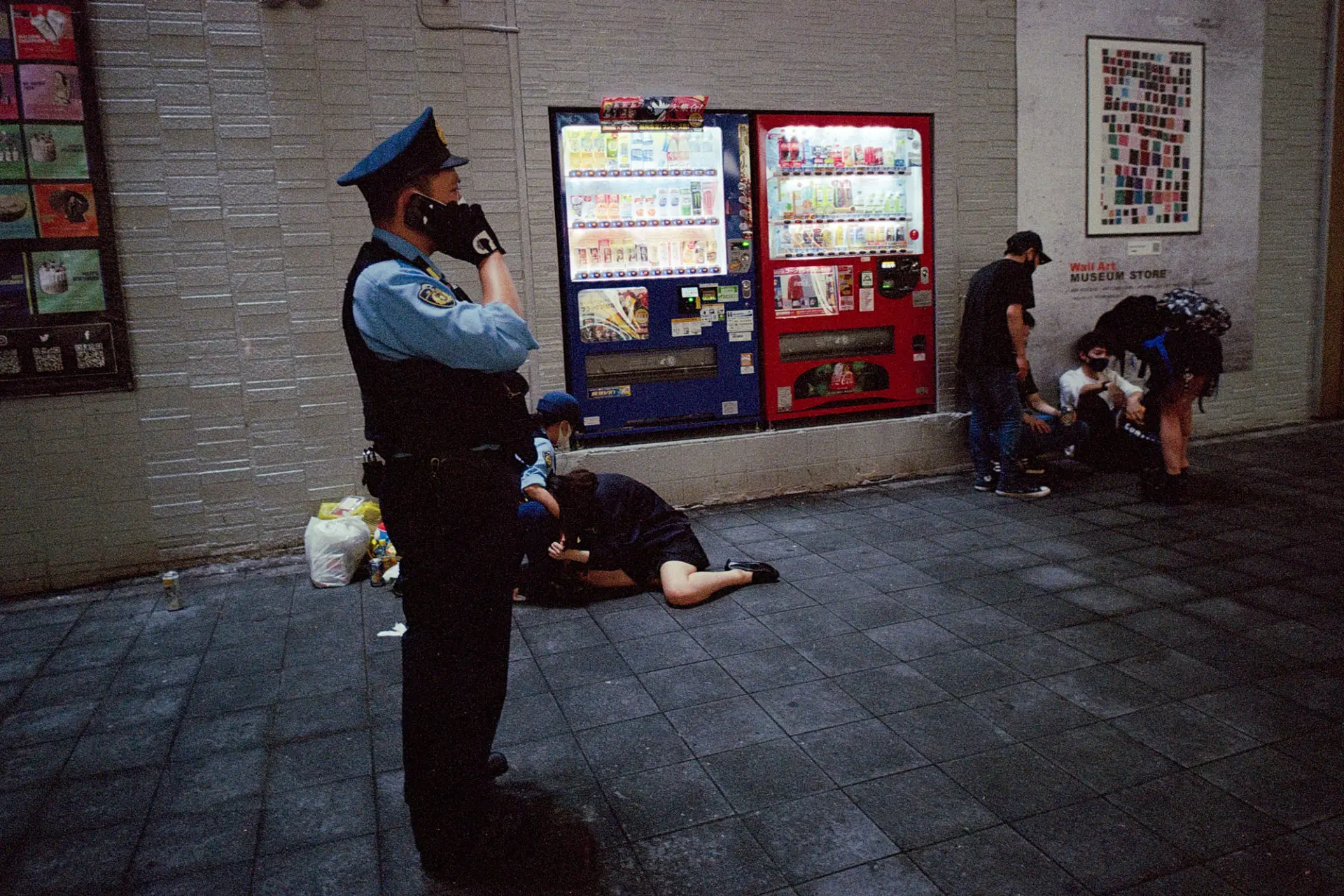
Moreover, among the Toyoko Kids, there are boys and girls who are thought to have mild intellectual disabilities. As far as I know, in Japan, discrimination against people with intellectual disabilities is very strong, and parents try to hide the fact that their child has an intellectual disability.
As a result, some children with mild intellectual disabilities turn to delinquency, and there are not a few cases where they cannot adapt well to society, get deceived by malicious adults, and become involved in crimes.
For example, when I went to New York previously, I saw advertisements in the subway offering support for victims of domestic violence. On the other hand, in Japan, there are no opportunities to come across discussions about domestic violence, abuse, or intellectual disabilities.
Unless you actively search for it yourself, it would not be an exaggeration to say that it’s almost non-existent.
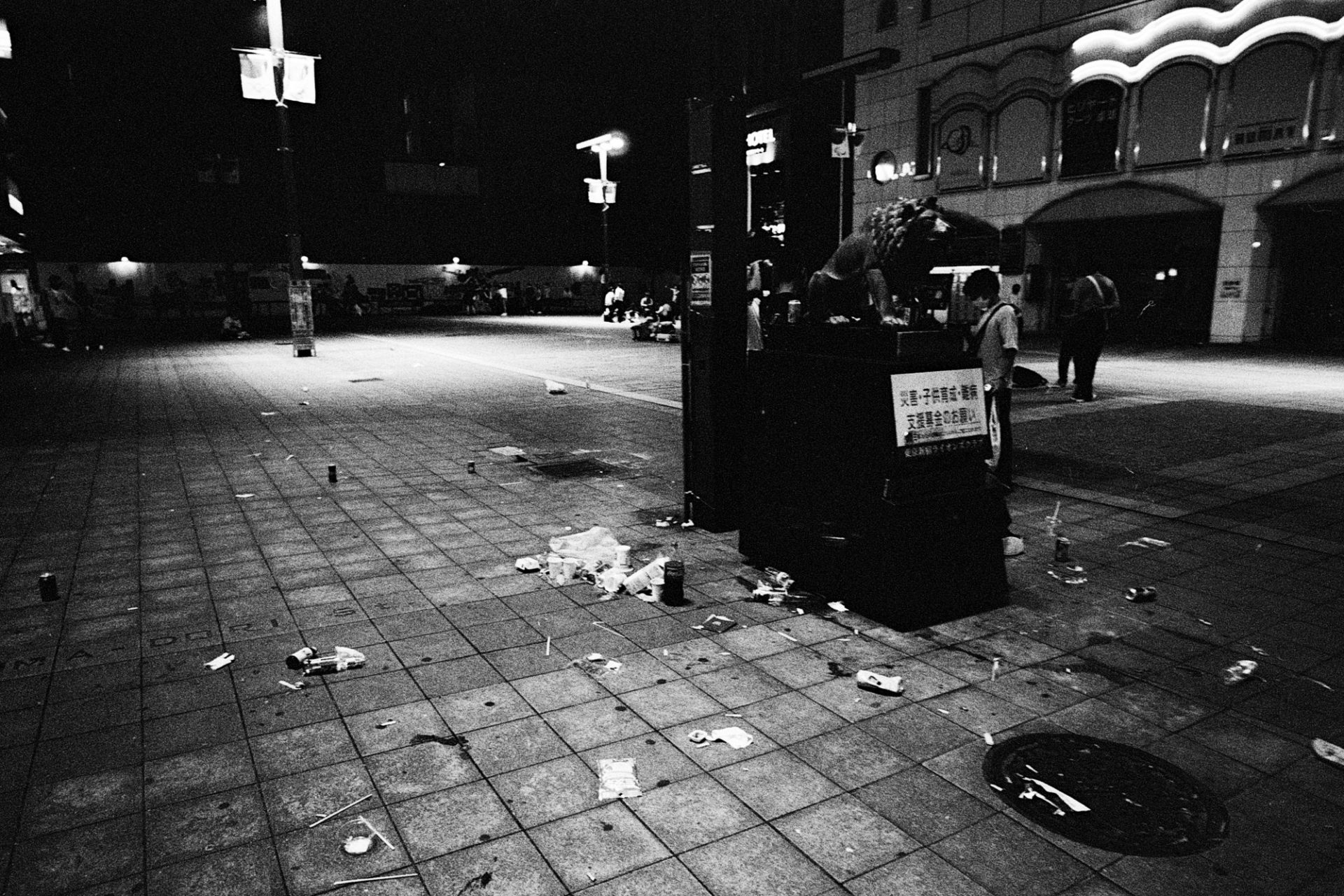
In March 2023, the building that had been under construction for several years in a corner of Kabukicho Square was finally completed. With the emergence of new commercial facilities, there was a need to make Kabukicho Square even cleaner, and the space was becoming less inviting for Toyko Kids to gather.
The Kabukicho Square, where teenagers with no place at home ended up searching for a place to belong. As the square loses its role as their sanctuary, where will these young people go next?
for more contents, please follow me
Instagram: @_nuts.tokyo_
YouTube: @_nuts.tokyo_

